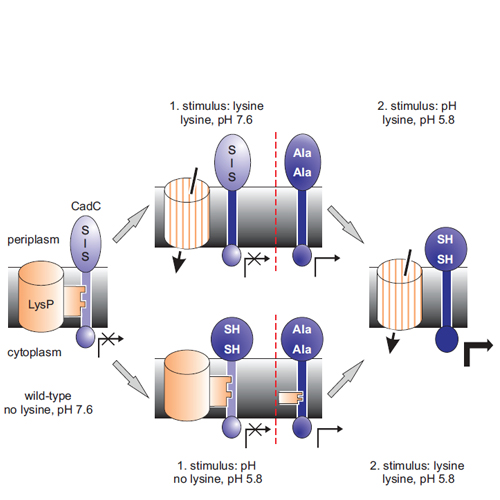Detection and function of an intramolecular disulfide bond in the pH-responsive CadC of Escherichia coli
12-Apr-2011
BMC Microbiology, 2011, doi:10.1186/1471-2180-11-74, 11:74 published on 12.04.2011
BMC Microbiology, online article
BMC Microbiology, online article
Background: In an acidic and lysine-rich environment Escherichia coli induces expression of the cadBA operon which encodes CadA, the lysine decarboxylase, and CadB, the lysine/cadaverine antiporter. cadBA expression is dependent on CadC, a membrane-integrated transcriptional activator which belongs to the ToxR-like protein family. Activation of CadC requires two stimuli, lysine and low pH. Whereas lysine is detected by an interplay between CadC and the lysine-specific transporter LysP, pH alterations are sensed by CadC directly. Crystal structural analyses revealed a close proximity between two periplasmic cysteines, Cys208 and Cys272. Results: Substitution of Cys208 and/or Cys272 by alanine resulted in CadC derivatives that were active in response to only one stimulus, either lysine or pH 5.8. Differential in vivo thiol trapping revealed a disulfide bond between these two residues at pH 7.6, but not at pH 5.8. When Cys208 and Cys272 were replaced by aspartate and lysine, respectively, virtually wild-type behavior was restored indicating that the disulfide bond could be mimicked by a salt bridge. Conclusion: A disulfide bond was found in the periplasmic domain of CadC that supports an inactive state of CadC at pH 7.6. At pH 5.8 disulfide bond formation is prevented which transforms CadC into a semi-active state. These results provide new insights into the function of a pH sensor.











